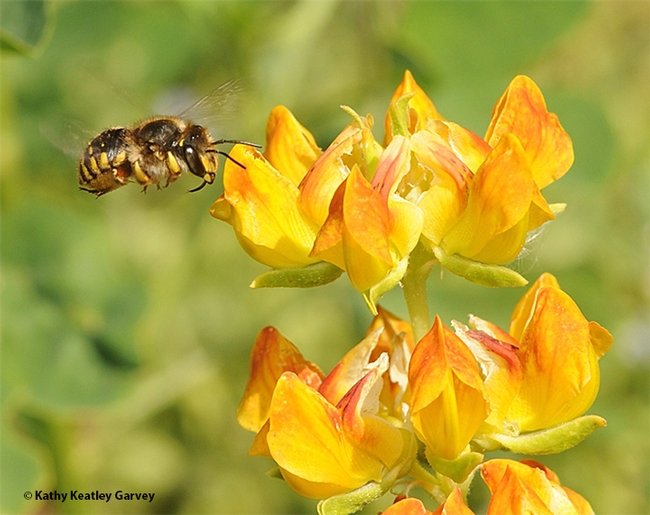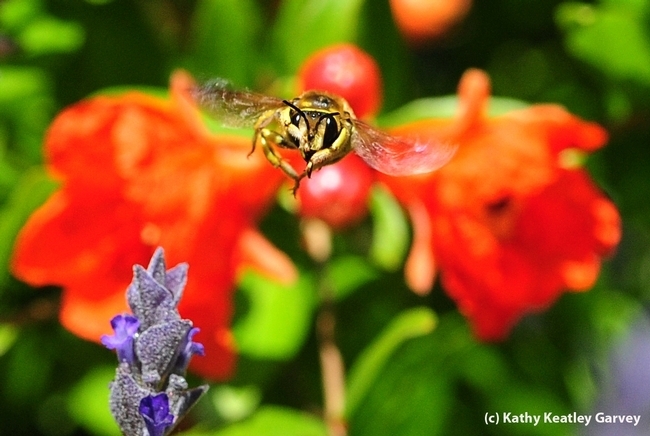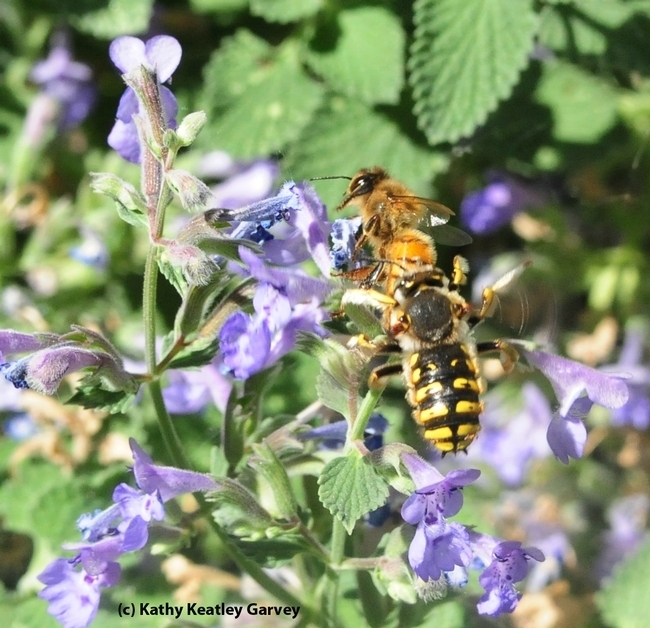Learning more about insects ought to be one of your New Year's resolutions.
Here's a good place to start: read the UC Davis Bohart Museum of Entomology's Insect Information Sheets.
Terry Erwin of the Smithsonian Institution's Department of Entomology estimates the number of living species of insects at 30 million. "Insects also probably have the largest biomass of the terrestrial animals," according to the Smithsonian website. "At any time, it is estimated that there are some 10 quintillion (10,000,000,000,000,000,000) individual insects alive."
Some other points from the Smithsonian scientists:
- "In the United States, the number of described species is approximately 91,000. The undescribed species of insects in the United States, however, is estimated at some 73,000. The largest numbers of described species in the U.S. fall into four insect Orders: Coleoptera (beetles) at 23,700, Diptera (flies) at 19,600, Hymenoptera (ants, bees, wasps) at 17,500, and Lepidoptera (moths and butterflies) at 11,500."
- "Certain social insects have large numbers in their nests. An ant nest in Jamaica was calculated to include 630,000 individuals. A South American termite nest was found to have 3 million individuals. Locust swarms are said to hold up to one billion individuals."
- "Insects have remarkable fertility and reproductive abilities, which have usually led to the vast numbers of individuals in nature. East African termite queens have been recorded to lay an egg every two seconds, amounting to 43,000 eggs each day. To appreciate the population potentials of insects the example of the housefly is sometimes used, stating that the descendants of one pair of this insect, provided that they all survived during a five month season, would total 190 quintillion individuals."
-
"Recent figures indicate that there are more than 200 million insects for each human on the planet! A recent article in The New York Times claimed that the world holds 300 pounds of insects for every pound of human."
So, if you weighed all the bugs of the world, they would weigh much more than all the people in the world. (See fivethirtyeight.com)
The Bohart Museum information sheets will inform you about ants, beetles, wasps, bees, mites, ticks, flies, butterflies, moths, true bugs, praying mantids, Jerusalem crickets (aka potato bugs), earwigs, booklice, and additional home pests (no, not the permanent occupants of your home).
The fact sheets also cover such non-insects as spiders (arachnids), house centipedes, springtails, sowbugs, scorpions, lawn shrimp, and earthworms and the like (if you don't like them, you can at least appreciate them).
One of the bees featured is the European wool carder bee, Anthidium manicatum. It's a "species of European megachilid bee that has successfully colonized North America," Kimsey writes. "However, North America isn't the only place these bees have invaded. They are now found in north Africa, South America, Asia the Canary Islands and even New Zealand."
The bee, introduced into the United States from Europe in the early 1960s, was first detected in New York state "but has rapidly spread throughout North America since then," Kimsey points out. "The first California collection was in the early 2000's and the bee had reached Davis by 2007."
"Wool carder females are particularly fond of lamb's ears (Stachys byzantina) and as a result this is often where males are found. Females use their jaws to scrape, or card the hairy leaves to collect fibers. They can be pretty entertaining if they decide that wool socks are good sources of fibers, too" (as what happened to Bohart associate Tom Zavortink.)
Male wool carder bees are aggressively territorial. They'll attack other bees, including honey bees and carpenter bees, "and even small birds, like hummingbirds," Kimsey says.
Photographer Allan Jones of Davis calls the male wool carder bees "bonker bees," because they bonk or bop off would-be competitors from floral resources--or they try to.
The wonderful world of insects...
Attached Images:

A European wool carder bee, Anthidium manicatum, heads for a snapdragon. (Photo by Kathy Keatley Garvey)

A male European wool carder in flight over a pomegranate blossom. (Photo by Kathy Keatley Garvey)

Male European wool carder bees are highly territorial. This one is targeting a honey bee on a catmint blossom. (Photo by Kathy Keatley Garvey)